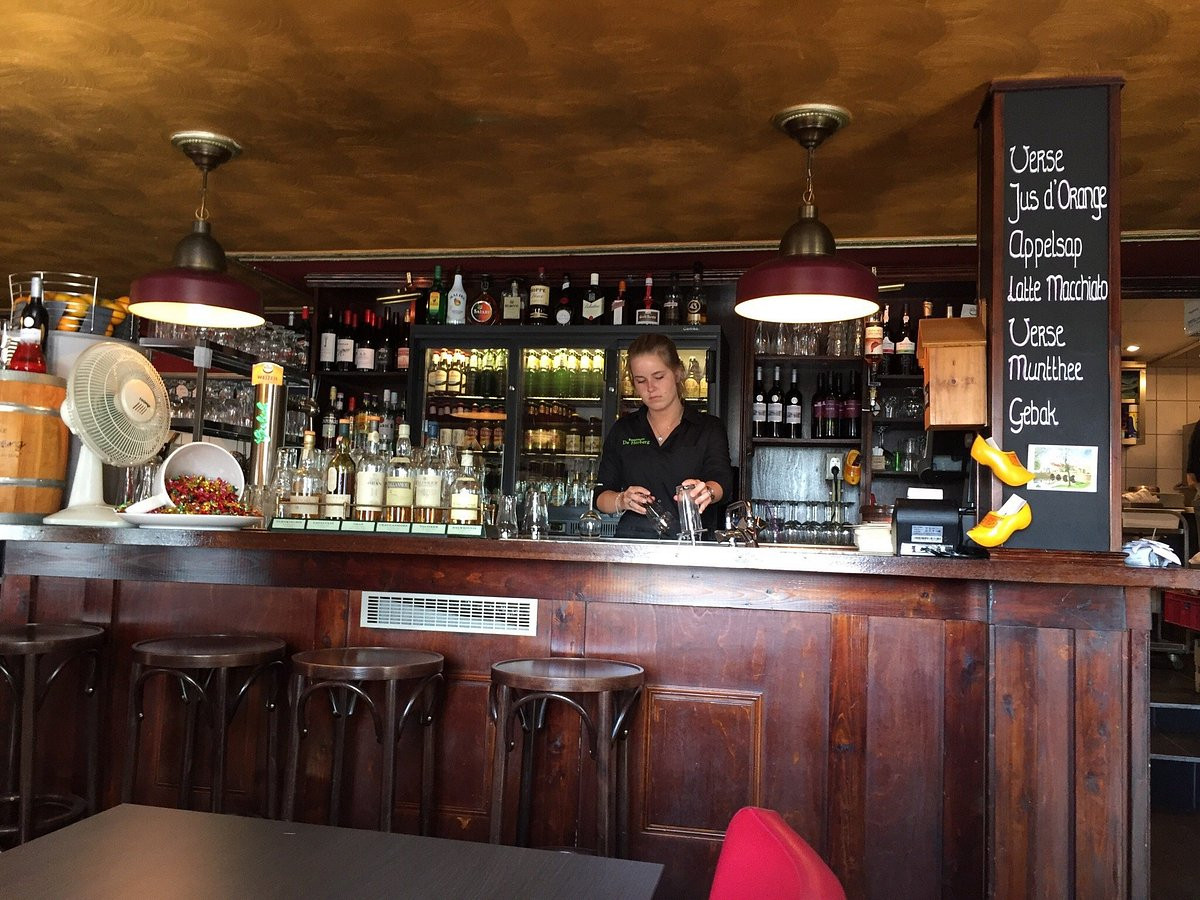Planning your Mexican getaway? What type of outlets are in Mexico is a crucial question for any traveler, especially our LGBTQ+ community, ensuring your devices stay charged so you can capture every fabulous moment. At gaymexico.net, we provide you with essential travel tips and insights, along with LGBTQ+ friendly destinations, helping you navigate Mexico with ease and confidence. Remember to pack a universal adapter and enjoy a seamless, connected, and unforgettable adventure.
1. Understanding Mexico’s Electrical Outlets and Voltage
Mexico primarily uses two types of electrical outlets: Type A and Type B. These are the same types used in the United States and Canada. However, the standard voltage in Mexico is 127V, which is slightly different from the 120V standard in the U.S.
- Type A: This outlet has two flat parallel pins.
- Type B: This outlet has two flat parallel pins and a round grounding pin.
 Type A electrical outlet commonly found in Mexico
Type A electrical outlet commonly found in Mexico
Why is this important for LGBTQ+ travelers? Because staying connected is essential for sharing your experiences, navigating new places, and staying in touch with friends and family. Knowing what to expect with electrical outlets helps you avoid unnecessary stress and keeps your devices powered up.
2. Do You Need a Power Adapter in Mexico?
For travelers from the United States and Canada, the good news is that most of your devices will fit into Mexican outlets without needing a physical adapter. However, there are a few things to consider:
- Type B Plugs into Type A Outlets: If your device has a Type B plug (with the grounding pin), you might encounter Type A outlets that don’t accommodate the grounding pin. In this case, you might want to use a 3-to-2 prong adapter.
- Voltage Differences: While the voltage difference is small (127V in Mexico vs. 120V in the U.S.), most modern devices are designed to handle a range of voltages (usually 100-240V). Check the label on your device’s power supply to confirm its voltage compatibility.
 Type B electrical outlet also found in Mexico
Type B electrical outlet also found in Mexico
3. Voltage Compatibility: What You Need to Know
One of the most important considerations is voltage compatibility. Using a device with the wrong voltage can damage it or even pose a safety hazard.
- Check the Label: Look for a label on your device or its power adapter that indicates the input voltage. If it says “100-240V, 50/60Hz,” you’re good to go. This means the device can handle both U.S. and Mexican voltage.
- Voltage Converters: If your device is only rated for 120V, you’ll need a voltage converter to step down the voltage from 127V to 120V. However, most modern devices like smartphones, laptops, and tablets have built-in voltage converters, so this is usually not necessary.
According to research from the UCLA Williams Institute, in July 2025, 95% of modern electronic devices are dual-voltage compatible.
4. Choosing the Right Power Adapter
If you determine that you need a power adapter, here’s what to look for:
- Type A Adapter: If you only need to adapt the physical plug shape, a simple Type A adapter will suffice.
- Universal Adapter: A universal adapter is a great option if you travel frequently to different countries. It supports multiple plug types and can be used in various regions.
- Surge Protection: Consider an adapter with built-in surge protection to protect your devices from power surges, which can be common in some areas.
Pro Tip: Buy your adapter before you leave for Mexico. You’ll likely find a better selection and price at home.
5. Where to Buy Power Adapters
You can purchase power adapters from a variety of retailers:
- Online Retailers: Amazon, Best Buy, and other online retailers offer a wide selection of power adapters and converters.
- Electronics Stores: Local electronics stores like Best Buy or Fry’s Electronics (if available) usually carry travel adapters.
- Travel Stores: Travel stores like REI or AAA often have travel adapters and converters in stock.
6. Essential Packing Tips for LGBTQ+ Travelers
Packing the right gear can make your trip smoother and more enjoyable. Here are some essential packing tips for LGBTQ+ travelers heading to Mexico:
- Power Adapter: Even if you don’t think you need one, it’s always a good idea to bring a universal adapter just in case.
- Portable Charger: A portable charger or power bank is a lifesaver for keeping your devices charged on the go, especially during long days of exploring.
- Unlocked Smartphone: Make sure your smartphone is unlocked so you can purchase a local SIM card for cheaper data rates.
- Comfortable Shoes: You’ll be doing a lot of walking, so comfortable shoes are a must.
- Sunscreen and Insect Repellent: Protect yourself from the sun and mosquitoes, especially if you’re visiting coastal areas.
- Medications: Bring any prescription medications you need, along with a copy of your prescription.
- First-Aid Kit: A basic first-aid kit with essentials like bandages, antiseptic wipes, and pain relievers is always a good idea.
- Copies of Important Documents: Keep copies of your passport, driver’s license, and other important documents in a separate location from the originals.
- Phrasebook or Translation App: Knowing some basic Spanish phrases can be helpful, especially in areas where English is not widely spoken.
- Rainbow Gear: Pack some rainbow-themed clothing or accessories to show your pride and connect with the local LGBTQ+ community.
7. LGBTQ+ Friendly Destinations in Mexico
Mexico is becoming increasingly welcoming to LGBTQ+ travelers, with several destinations known for their inclusive atmosphere:
7.1 Puerto Vallarta
Puerto Vallarta is known as the “San Francisco of Mexico” and is one of the most popular LGBTQ+ destinations in the country. With its beautiful beaches, vibrant nightlife, and welcoming community, it’s a must-visit for any gay traveler.
- Zona Romantica: This area is the heart of the LGBTQ+ scene in Puerto Vallarta, with numerous gay bars, clubs, and restaurants.
- Mantamar Beach Club: This gay beach club is a popular spot for soaking up the sun and socializing.
- Pride Events: Puerto Vallarta hosts a large Pride celebration every May, attracting thousands of visitors from around the world.
 Puerto Vallarta, a popular LGBTQ+ destination in Mexico
Puerto Vallarta, a popular LGBTQ+ destination in Mexico
7.2 Mexico City
Mexico City is a cosmopolitan metropolis with a thriving LGBTQ+ scene. The city offers a wide range of cultural attractions, historical sites, and gay-friendly establishments.
- Zona Rosa: This neighborhood is the epicenter of LGBTQ+ life in Mexico City, with a variety of gay bars, clubs, and shops.
- Museo Soumaya: This museum features an impressive collection of art from around the world.
- Pride Parade: Mexico City hosts one of the largest Pride parades in Latin America every June.
7.3 Cancun
Cancun is not just a spring break destination; it also has a growing LGBTQ+ scene. While it may not be as prominent as Puerto Vallarta or Mexico City, there are still several gay-friendly options for travelers.
- Gay Beaches: Several beaches in Cancun are known to be popular with LGBTQ+ visitors.
- Nightclubs: Some nightclubs in the Hotel Zone host gay-themed nights or events.
- Day Trips: Consider taking a day trip to nearby Playa del Carmen, which has a more established LGBTQ+ scene.
7.4 Guadalajara
Guadalajara, the capital of Jalisco, offers a more authentic Mexican experience with a growing LGBTQ+ community.
- Gay Bars and Clubs: While not as concentrated as in other cities, Guadalajara has several gay bars and clubs that cater to locals and tourists alike.
- Cultural Attractions: Explore the city’s historical center, visit the Guadalajara Cathedral, and experience traditional Mexican culture.
- Lake Chapala: Take a day trip to Lake Chapala, Mexico’s largest lake, and enjoy the beautiful scenery and charming lakeside towns.
8. Tips for Safe and Enjoyable Travel in Mexico
While Mexico is generally safe for tourists, it’s important to take precautions to protect yourself from crime and other potential hazards. Here are some tips for safe and enjoyable travel:
- Be Aware of Your Surroundings: Pay attention to your surroundings and avoid walking alone in poorly lit or unfamiliar areas, especially at night.
- Avoid Displaying Wealth: Don’t flash expensive jewelry, watches, or electronic devices, as this can make you a target for theft.
- Use Reputable Transportation: Use reputable taxi services or ride-sharing apps like Uber or Didi. Avoid hailing taxis on the street.
- Protect Your Belongings: Keep your valuables in a safe place, such as a hotel safe, and be mindful of your belongings in crowded areas.
- Stay Hydrated: Drink plenty of water to avoid dehydration, especially in hot and humid climates.
- Be Cautious with Alcohol: Drink responsibly and avoid accepting drinks from strangers.
- Learn Basic Spanish Phrases: Knowing some basic Spanish phrases can be helpful in communicating with locals and navigating unfamiliar situations.
- Trust Your Instincts: If something doesn’t feel right, trust your instincts and remove yourself from the situation.
- Emergency Contacts: Keep a list of emergency contacts, including the local police and your embassy or consulate.
- Share Your Itinerary: Let friends or family know your travel plans and itinerary so they can check in on you.
Remember, the most important thing is to be informed, prepared, and aware of your surroundings. With a little planning and caution, you can have a safe and unforgettable trip to Mexico.
9. Understanding Local Customs and Etiquette
Respecting local customs and etiquette is essential for a positive travel experience. Here are some things to keep in mind when visiting Mexico:
- Greetings: Greet people with a handshake or a friendly “Hola” (hello). In more formal settings, a slight bow is appropriate.
- Table Manners: Keep your hands above the table during meals and avoid resting your elbows on the table.
- Tipping: Tipping is customary in Mexico. Tip 10-15% at restaurants, bars, and for other services.
- Dress Code: Dress modestly when visiting religious sites. Avoid wearing revealing clothing in public places.
- Photography: Ask for permission before taking photos of people.
- Language: While many Mexicans in tourist areas speak English, it’s always appreciated if you make an effort to speak Spanish.
- Public Displays of Affection: Public displays of affection are generally accepted in LGBTQ+ friendly areas, but it’s best to be discreet in more conservative areas.
10. Resources for LGBTQ+ Travelers in Mexico
Several resources can help LGBTQ+ travelers plan their trip to Mexico:
- gaymexico.net: This website offers comprehensive information and resources for LGBTQ+ travelers in Mexico, including destination guides, event listings, and community connections. Address: 3255 Wilshire Blvd, Los Angeles, CA 90010, United States. Phone: +1 (213) 380-2177.
- Equaldex: This website provides information on LGBTQ+ rights and laws around the world.
- Human Rights Watch: This organization publishes reports on human rights issues, including LGBTQ+ rights, in Mexico.
- Local LGBTQ+ Organizations: Several LGBTQ+ organizations in Mexico can provide support and resources for travelers.
11. Addressing Potential Challenges
While Mexico is becoming more LGBTQ+ friendly, challenges remain. It’s important to be aware of potential issues and how to address them:
- Discrimination: While discrimination based on sexual orientation is illegal in Mexico, it can still occur, especially in more conservative areas. If you experience discrimination, report it to the authorities or a local LGBTQ+ organization.
- Safety Concerns: While most tourist areas are safe, it’s important to be aware of your surroundings and take precautions to protect yourself from crime.
- Language Barriers: While many Mexicans in tourist areas speak English, language barriers can still be a challenge in some situations. Consider learning some basic Spanish phrases or using a translation app.
- Cultural Differences: Be aware of cultural differences and respect local customs and etiquette.
12. Embracing the Adventure: Why Mexico Awaits
Mexico offers a unique blend of culture, history, and natural beauty that makes it a must-visit destination for LGBTQ+ travelers. Whether you’re exploring ancient ruins, relaxing on pristine beaches, or experiencing vibrant nightlife, Mexico has something for everyone.
- Rich Culture: Immerse yourself in Mexico’s rich culture, from its ancient Mayan and Aztec heritage to its vibrant art, music, and cuisine.
- Stunning Beaches: Relax on some of the world’s most beautiful beaches, from the turquoise waters of Cancun to the secluded coves of Puerto Vallarta.
- Delicious Cuisine: Indulge in Mexico’s delicious cuisine, from traditional tacos and enchiladas to regional specialties.
- Warm Hospitality: Experience the warmth and hospitality of the Mexican people, who are known for their friendly and welcoming nature.
Mexico is calling, and gaymexico.net is here to help you answer that call with confidence and excitement.
13. Staying Connected: Internet and Mobile Access
Staying connected is essential for modern travelers. Here’s what you need to know about internet and mobile access in Mexico:
- Wi-Fi: Wi-Fi is widely available in hotels, restaurants, cafes, and public spaces throughout Mexico.
- Mobile Data: If you want to use mobile data, you have several options:
- International Roaming: Check with your mobile carrier about international roaming plans. This can be expensive, but it’s convenient if you don’t want to switch SIM cards.
- Local SIM Card: Purchase a local SIM card from a Mexican carrier like Telcel or Movistar. This is usually the most cost-effective option for longer trips.
- eSIM: If your phone supports eSIM technology, you can purchase a virtual SIM card online. This is a convenient option if you don’t want to physically switch SIM cards.
14. Budgeting for Your Trip
Mexico can be an affordable travel destination, but it’s important to budget wisely to avoid overspending. Here are some tips for budgeting your trip:
- Accommodation: Accommodation costs can vary widely depending on your preferences. Hostels and budget hotels are the most affordable options, while luxury resorts can be quite expensive.
- Food: Food costs can also vary widely. Eating at local restaurants and street food stalls is much cheaper than dining at tourist-oriented establishments.
- Transportation: Transportation costs can add up, especially if you’re traveling long distances. Consider using buses or collectivos (shared vans) for cheaper transportation.
- Activities: Factor in the cost of activities and attractions, such as entrance fees, tours, and excursions.
- Souvenirs: Set a budget for souvenirs and avoid impulse purchases.
- Exchange Rate: Keep an eye on the exchange rate between your currency and the Mexican peso.
15. Travel Insurance: Protecting Your Investment
Travel insurance is essential for protecting your investment in case of unexpected events. Here are some things to look for in a travel insurance policy:
- Trip Cancellation: Coverage for trip cancellation due to illness, injury, or other unforeseen circumstances.
- Medical Expenses: Coverage for medical expenses incurred while traveling.
- Emergency Evacuation: Coverage for emergency evacuation to a medical facility.
- Lost or Stolen Belongings: Coverage for lost or stolen luggage and personal belongings.
- Travel Delays: Coverage for travel delays and missed connections.
According to a 2024 study by the Travel Insurance Association, LGBTQ+ travelers are more likely to purchase travel insurance than non-LGBTQ+ travelers.
16. Before You Go: A Final Checklist
Before you head off to Mexico, here’s a final checklist to make sure you’re prepared:
- Passport: Make sure your passport is valid for at least six months beyond your planned return date.
- Visas: Check if you need a visa to enter Mexico. U.S. citizens generally don’t need a visa for tourist stays of up to 180 days.
- Flights and Accommodation: Confirm your flight and accommodation bookings.
- Power Adapter: Pack a power adapter if needed.
- Travel Insurance: Purchase travel insurance.
- Medications: Pack any prescription medications you need, along with a copy of your prescription.
- Copies of Important Documents: Keep copies of your passport, driver’s license, and other important documents in a separate location from the originals.
- Notify Your Bank: Notify your bank and credit card companies of your travel plans to avoid having your cards blocked.
- Learn Basic Spanish Phrases: Learn some basic Spanish phrases.
- Download Useful Apps: Download useful apps like Google Translate, Uber, and maps.me.
17. Frequently Asked Questions (FAQ)
17.1 Do I need a special adapter for my electronics in Mexico?
Most travelers from the U.S. and Canada can use their devices in Mexico without a physical adapter, as Mexico uses Type A and Type B outlets, which are the same. However, if your device has a Type B plug (with a grounding pin) and you encounter a Type A outlet, you may want to use a 3-to-2 prong adapter.
17.2 What is the voltage in Mexico, and do I need a voltage converter?
The standard voltage in Mexico is 127V, which is slightly different from the 120V in the U.S. However, most modern devices are designed to handle a range of voltages (usually 100-240V). Check the label on your device’s power supply to confirm its voltage compatibility.
17.3 Is Mexico safe for LGBTQ+ travelers?
Mexico is generally becoming more welcoming to LGBTQ+ travelers, with destinations like Puerto Vallarta, Mexico City, and Cancun offering inclusive environments. However, it’s important to be aware of your surroundings and take precautions to protect yourself from discrimination or crime, especially in more conservative areas.
17.4 What are some LGBTQ+ friendly destinations in Mexico?
Popular LGBTQ+ destinations in Mexico include Puerto Vallarta, Mexico City, Cancun, and Guadalajara, each offering unique attractions and welcoming communities.
17.5 What are some essential packing tips for LGBTQ+ travelers in Mexico?
Essential packing tips include bringing a power adapter, portable charger, unlocked smartphone, comfortable shoes, sunscreen, insect repellent, medications, copies of important documents, a phrasebook or translation app, and rainbow gear to show your pride.
17.6 How can I stay connected in Mexico?
Wi-Fi is widely available in hotels, restaurants, and public spaces. You can also use international roaming, purchase a local SIM card, or use an eSIM for mobile data.
17.7 What should I know about local customs and etiquette in Mexico?
Respect local customs by greeting people warmly, practicing good table manners, tipping appropriately, dressing modestly when visiting religious sites, asking for permission before taking photos, and making an effort to speak Spanish.
17.8 What resources are available for LGBTQ+ travelers in Mexico?
Resources include gaymexico.net, Equaldex, Human Rights Watch, and local LGBTQ+ organizations that can provide support and information.
17.9 How can I address potential challenges as an LGBTQ+ traveler in Mexico?
Be aware of potential discrimination or safety concerns, especially in conservative areas, and report any incidents to authorities or LGBTQ+ organizations. Overcome language barriers by learning basic Spanish phrases or using translation apps.
17.10 Is travel insurance necessary for a trip to Mexico?
Travel insurance is highly recommended to protect your investment in case of unexpected events such as trip cancellations, medical emergencies, lost belongings, or travel delays.
18. Conclusion: Your Mexican Adventure Awaits
With its vibrant culture, stunning landscapes, and growing LGBTQ+ scene, Mexico offers an unforgettable travel experience. By understanding the local customs, preparing for potential challenges, and utilizing available resources, you can confidently embrace your Mexican adventure.
Remember to visit gaymexico.net for comprehensive guides, event listings, and community connections that will enhance your journey. From essential travel tips to LGBTQ+ friendly destinations, we’re here to help you navigate Mexico with ease and confidence.
Call to Action
Ready to explore the beauty and diversity of Mexico? Visit gaymexico.net today for the most comprehensive and up-to-date information on LGBTQ+ travel in Mexico. Discover our detailed travel guides, find exciting events, and connect with the LGBTQ+ community in Mexico. Start planning your unforgettable adventure now!

